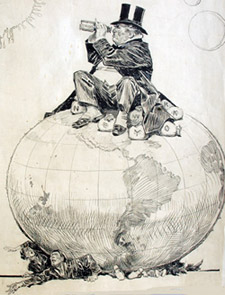A bit of culture shock for Daria on Saturday.
We stopped at Parti-Pak Discount Liquors in Indianapolis, mostly to see what sort of beers make their way into Indiana and what they cost. Heard a guy behind the counter say they stocked 2,100 beers and that is easy to believe. Rather complete lines of plenty of Michigan breweries (Dark Horse, Founders, New Holland, Bell’s), for instance. Indiana beers, of course. Largest collection of Italian beers we’ve seen since we were in Oak Tree Liquors in South Plainfield, N.J.
More than once my uncle, Omar Robinson, pointed to rows of bottles from Germany or Belgium and said, “I can’t believe they ship all these beers that far.” But this post isn’t about his cultural shock #– maybe more down the road, since he’s involved with his son, Clay, in starting Sun King Brewing. Key words in their business plan: local and draft beer.
Back to what Daria saw. When you walk in there is a section of shelves with individual beers that have Rate Beer ratings below them. “Did you see that?” she asked when we left. “The top rows are all 100 beers and Rochefort (10) gets a 93.”
